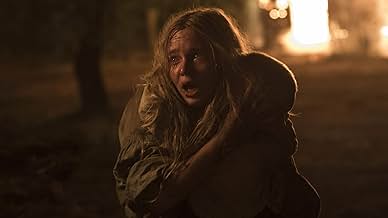The eastern limits of Poland were set after WWI along the Curzon line, roughly today's boundary. After Poland's victory over the Bolsheviks in the Russian Civil War, the boundary was shifted East. Some regions of the former Austro-Hungarian Empire such as Volhyn (the original title of this movie) and Eastern Galicia became de facto Polish, although Poles were a minority; for Volhyn the percentages were 70%, 16% and 10% for Ukrainians, Poles and Jews.
The film begins with a village wedding in Volyn shortly before the outbreak of WWII. The various ethnic groups are seen living in wary mistrust of each other. From conversations we learn that Ukrainians resent their heavy handed treatment by Polish authorities. Use of the Ukrainian language is forbidden or discouraged. Ukrainian schools are being closed. So are Orthodox and Greek Catholic churches, some demolished, others converted to Catholic churches.
In September 1939 the Soviets occupy Volhyn and Eastern Galicia in answer to Hitler's invasion of Poland. In June 1941 the region is overrun and occupied by Nazi troops on their way to invade the Soviet Union. Initially, some Ukrainians welcome the Germans in the belief they would support a free, independent Ukraine, but this hope is soon dashed. Some extreme right wing diehards such as the OUN = Organization of Ukrainian Nationalists and its paramilitary branch the UPA = Ukrainian Insurgent Army ally themselves with the occupiers and carry out a bloody campaign of ethnic cleansing against Polish and other minorities. This is the backdrop for the story, which centers on the the vicissitudes of bride Hela and sister Zosia during the war.
This film does everything well, including an even handed treatment of controversial history. It is spoken in Polish, Ukrainian and Russian and the subtitles do a good job of identifying each language. It is available in the streaming services under the title Hatred, the name of the novel on which it is based.































